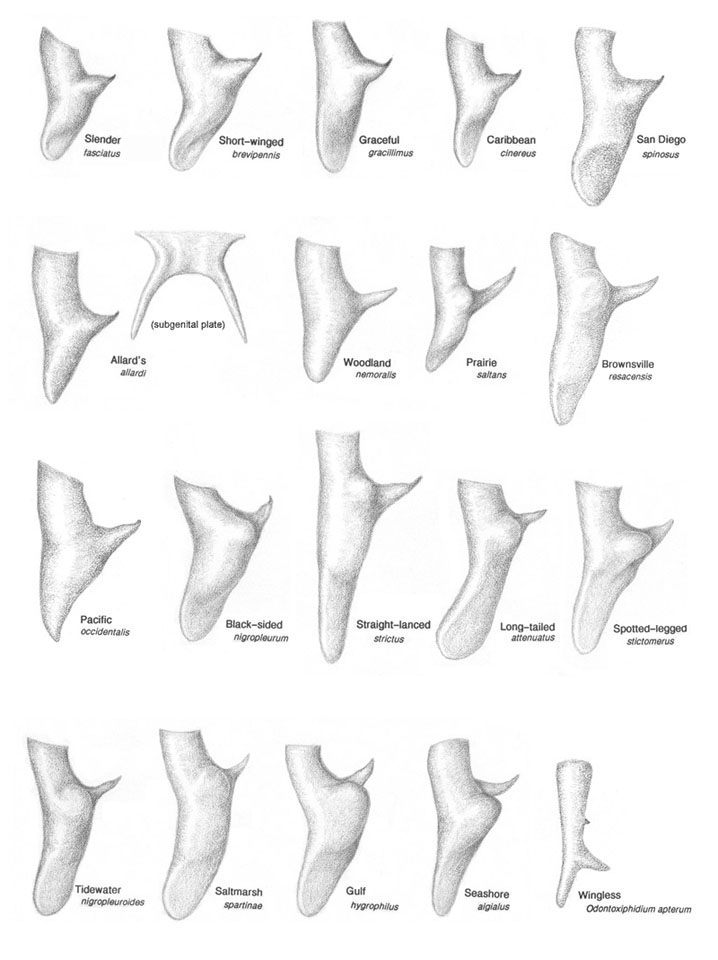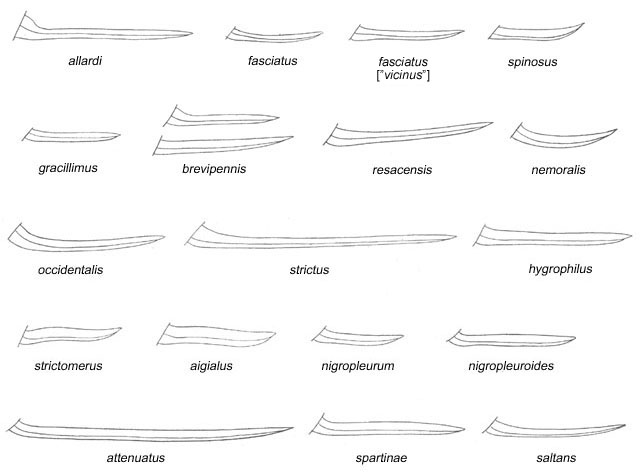




|
Key to genera of meadow katydids (Conocephalinae). |
If, on the basis of the characters in the key, you are uncertain whether Conocephalus is the correct genus for the specimen you wish to identify, these species of Orchelimum may be the source of your confusion:
Twelve species of Conocephalus usually have short forewings but occasionally produce individuals that have the forewings longer than the abdomen: Conocephalus aigiatus, attenuatus, brevipennis, hygrophilus, nemoralis, nigropleuroides, nigropleurum, occidentalis, saltans, spartinae, stictomerus, and strictus. Conocephalus cinereus, fasciatus, gracillimus, and vicinus always have forewings that exceed the abdomen, whereas the few individuals known for Conocephalus allardi, resacensis, and spinosus have short forewings.
Most Conocephalus males can be identified by their distinctive cerci. By comparing the dorsal view of the left cercus of a male you wish to identify with the ones in the summary plate below, you should be able to narrow the species you need to consider to one or a very few. (To learn more about a species, click on its cercus.)

Dorsal view of left cercus of North American Conocephalus.
The cercus of Odontoxiphidium apterum is included because that species is likely to be mistaken for a Conocephalus.
Drawings by Eliza Karpook.
The illustrations of cerci in Rehn & Hebard (1915b) included lateral and well as dorsal views.
Females of Conocephalus are often easiest to identify by association with males. However, in some species the ovipositor is helpful or even distinctive:

Lateral view of ovipositor of North American Conocephalus.
From Plate XX of Rehn & Hebard (1915b).